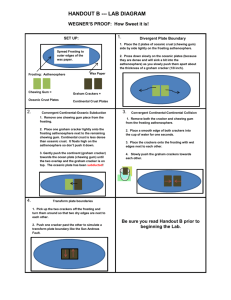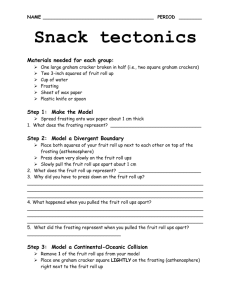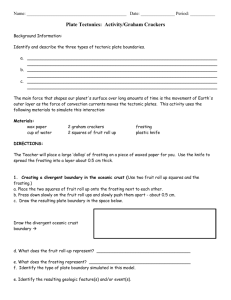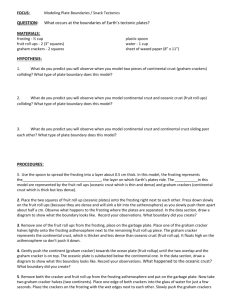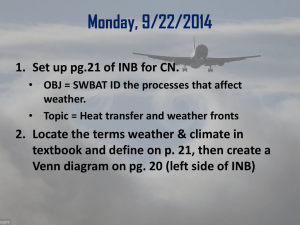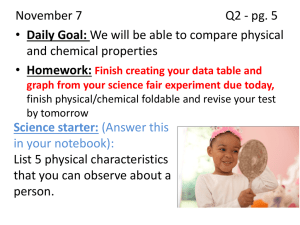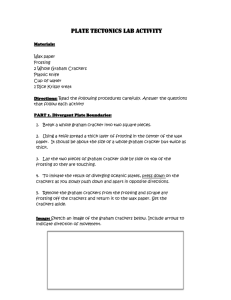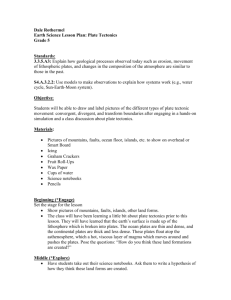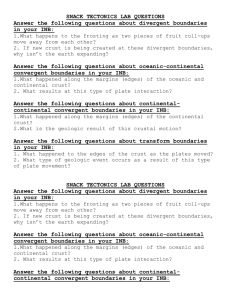Snack Tectonics Lab
advertisement
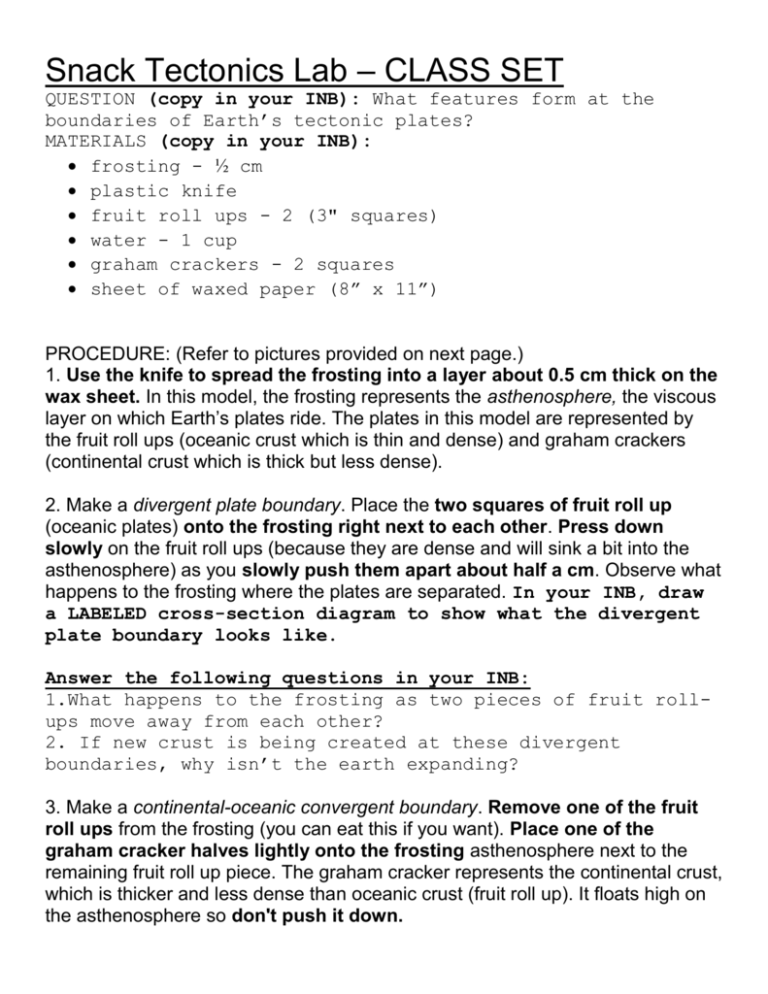
Snack Tectonics Lab – CLASS SET QUESTION (copy in your INB): What features form at the boundaries of Earth’s tectonic plates? MATERIALS (copy in your INB): frosting - ½ cm plastic knife fruit roll ups - 2 (3" squares) water - 1 cup graham crackers - 2 squares sheet of waxed paper (8” x 11”) PROCEDURE: (Refer to pictures provided on next page.) 1. Use the knife to spread the frosting into a layer about 0.5 cm thick on the wax sheet. In this model, the frosting represents the asthenosphere, the viscous layer on which Earth’s plates ride. The plates in this model are represented by the fruit roll ups (oceanic crust which is thin and dense) and graham crackers (continental crust which is thick but less dense). 2. Make a divergent plate boundary. Place the two squares of fruit roll up (oceanic plates) onto the frosting right next to each other. Press down slowly on the fruit roll ups (because they are dense and will sink a bit into the asthenosphere) as you slowly push them apart about half a cm. Observe what happens to the frosting where the plates are separated. In your INB, draw a LABELED cross-section diagram to show what the divergent plate boundary looks like. Answer the following questions in your INB: 1.What happens to the frosting as two pieces of fruit rollups move away from each other? 2. If new crust is being created at these divergent boundaries, why isn’t the earth expanding? 3. Make a continental-oceanic convergent boundary. Remove one of the fruit roll ups from the frosting (you can eat this if you want). Place one of the graham cracker halves lightly onto the frosting asthenosphere next to the remaining fruit roll up piece. The graham cracker represents the continental crust, which is thicker and less dense than oceanic crust (fruit roll up). It floats high on the asthenosphere so don't push it down. 4. Gently push the continent (graham cracker) towards the ocean plate (fruit roll up) until the two overlap and the graham cracker is on top. The oceanic plate is subducted below the continental one. In your INB, draw a LABELED cross-section diagram to show what this continentaloceanic convergent boundary looks like. Answer the following questions in your INB: 1.What happened along the margins (edges) of the oceanic and continental crust? 2. What results at this type of plate interaction? 5. Make a continental--continental convergent boundary. Remove both the cracker and fruit roll up from the frosting asthenosphere (you can eat or discard the fruit roll up). Place one edge of both crackers into the glass of water for just a few seconds. Place the crackers on the frosting with the wet edges next to each other. Slowly push the graham crackers towards each other. Observe the edges of the graham crackers where they are colliding. In your INB, draw a LABELED cross-section diagram to show what this continental-continental convergent boundary looks like. Answer the following questions in your INB: 1.What happened along the margins (edges) of the continental crust? 2.What is the geologic result of this crustal motion? 6. Make a transform plate boundary. Pick the two crackers up off the frosting and turn them around so that two dry edges are next to each other. Push one cracker past the other to simulate a transform plate boundary. In your INB, draw a cross-section diagram to show what the transform boundary looks like. Answer the following questions IN YOUR INB: 1. What happened to the edges of the crust as the plates moved? 2. What type of geologic event occurs as a result of this type of plate movement?
